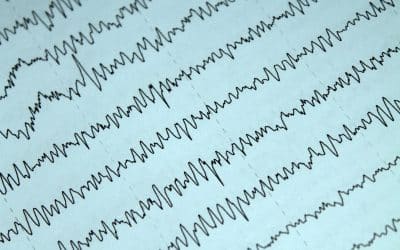Abstract Emerging findings suggest that compromised cellular bioenergetics and DNA repair contribute to the pathogenesis of Alzheimer's disease (AD), but their role in disease-defining pathology is unclear. We developed a DNA repair-deficient 3xTgAD/Polβ+/- mouse that...
Alzheimer’s Disease
Explore the latest research on the use of Hyperbaric Oxygen Therapy (HBOT) to treat Alzheimer’s Disease.
Extivita maintains an extensive publication database for Alzheimer’s Disease and various other indications with therapies such as Hyperbaric Oxygen Therapy, Neurofeedback, Nutritional IV Therapy, Infrared Sauna, and Pulsed Electromagnetic Field Therapy. Explore our database on Acne and Hyperbaric Oxygen Therapy aka, HBOT, below.
For a complete list of indications treated at Extivita, explore the conditions we treat.
Regional Cerebral Blood Flow in Mild Cognitive Impairment and Alzheimer’s Disease Measured with Arterial Spin Labeling Magnetic Resonance Imaging
Abstract Alzheimer's disease (AD) depicts dynamic changes in regional brain function from early stages of the disease. Arterial spin labeling- (ASL-) based MRI methods have been applied for detecting regional cerebral blood flow (rCBF) perfusion changes in patients...
Hyperbaric Oxygen Pretreatment Improves Cognition and Reduces Hippocampal Damage Via p38 Mitogen-Activated Protein Kinase in a Rat Model.
To investigate the effects of hyperbaric oxygen (HBO) pretreatment on cognitive decline and neuronal damage in an Alzheimer’s disease (AD) rat model. Rats were divided into three groups: normal saline (NS), AD, and HBO+AD. In the AD group, amyloid β peptide (Aβ)₁₋₄₀ was injected into the hippocampal CA1 region of the brain. NS rats received NS injection. In the HBO+AD group, rats received 5 days of daily HBO therapy following Aβ₁₋₄₀ injection. Learning and memory capabilities were examined using the Morris water maze task. Neuronal damage and astrocyte activation were evaluated by hematoxylin-eosin staining and immunohistochemistry, respectively. Dendritic spine density was determined by Golgi-Cox staining. Tumor necrosis factor-α, interleukin-1β, and interleukin-10 production was assessed by enzyme-linked immunosorbent assay. Neuron apoptosis was evaluated by terminal deoxynucleotidyl transferase dUTP nick end labeling. Protein expression was examined by western blotting. HBO pretreatment improves cognition and reduces hippocampal damage via p38 MAPK in AD rats.
The effectiveness of neurofeedback on cognitive functioning in patients with Alzheimer’s disease: Preliminary results
Abstract Objectives: Alzheimer's disease (AD) is the most common form of dementia. In quantified EEG (qEEG), the AD patients have a greater amount of theta activity compared with normal elderly individuals. Little is known about the effect of neurofeedback in patients...
The amyloid hypothesis of Alzheimer’s disease at 25 years
Abstract Despite continuing debate about the amyloid β-protein (or Aβ hypothesis, new lines of evidence from laboratories and clinics worldwide support the concept that an imbalance between production and clearance of Aβ42 and related Aβ peptides is a very early,...
Adverse Effects of Cholinesterase Inhibitors in Dementia, According to the Pharmacovigilance Databases of the United-States and Canada
Abstract This survey analyzes two national pharmacovigilance databases in order to determine the major adverse reactions observed with the use of cholinesterase inhibitors in dementia. We conducted a statistical analysis of the Food and Drug Administration Adverse...
Hyperbaric Oxygen and Ginkgo Biloba Extract Ameliorate Cognitive and Memory Impairment via Nuclear Factor Kappa-B Pathway in Rat Model of Alzheimer’s Disease.
Hyperbaric oxygen (HBO) and Ginkgo biloba extract (e.g., EGB 761) were shown to ameliorate cognitive and memory impairment in Alzheimer’s disease (AD). However, the exact mechanism remains elusive. The aim of the present study was to investigate the possible mechanisms of HBO and EGB 761 via the function of nuclear factor kappa-B (NF-κB) pathway. AD rats were induced by injecting β-amyloid 25-35 into the hippocampus. All animals were divided into six groups: Normal, sham, AD model, HBO (2 atmosphere absolute; 60 min/d), EGB 761 (20 mg·kg-1·d-1 ), and HBO/EGB 761 groups. Morris water maze tests were used to assess cognitive, and memory capacities of rats; TdT-mediated dUTP Nick-End Labeling staining and Western blotting were used to analyze apoptosis and NF-κB pathway-related proteins in hippocampus tissues. orris water maze tests revealed that EGB 761 and HBO significantly improved the cognitive and memory ability of AD rats. In addition, the protective effect of combinational therapy (HBO/EGB 761) was superior to either HBO or EGB 761 alone. In line, reduced apoptosis with NF-κB pathway activation was observed in hippocampus neurons treated by HBO and EGB 761. ur results suggested that HBO and EGB 761 improve cognitive and memory capacity in a rat model of AD. The protective effects are associated with the reduced apoptosis with NF-κB pathway activation in hippocampus neurons.
Brain glutathione levels–a novel biomarker for mild cognitive impairment and Alzheimer’s disease
Abstract Background: Extant data from in vivo animal models and postmortem studies indicate that Alzheimer's disease (AD) pathology is associated with reduction of the brain antioxidant glutathione (GSH), yet direct clinical evidence has been lacking. In this study,...
Increases in microvascular perfusion and tissue oxygenation via pulsed electromagnetic fields in the healthy rat brain
Abstract Object: High-frequency pulsed electromagnetic field stimulation is an emerging noninvasive therapy being used clinically to facilitate bone and cutaneous wound healing. Although the mechanisms of action of pulsed electromagnetic fields (PEMF) are unknown,...







